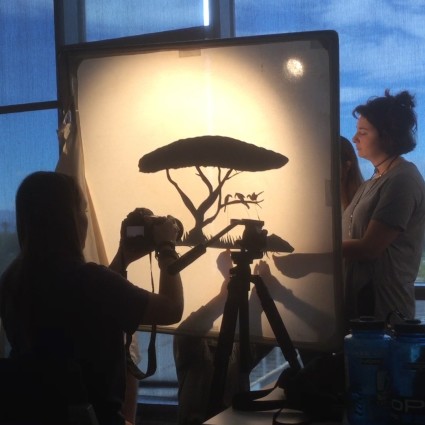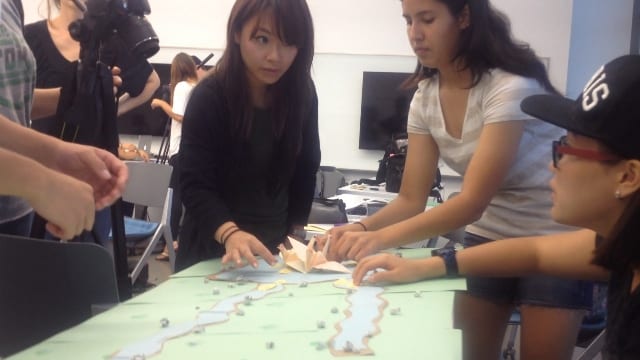Put together a group of biology and film students in a classroom and the energy soon begins to sizzle.
First taught in fall 2015, the course “Biology, Film and Science Communication” was the brainchild of Loyola Marymount University Biology Professor Heather Watts and Patrick Scott, a filmmaker who teaches visual storytelling in the School of Film and Television. The premise of the course was for students to work together to visualize and communicate scientific concepts to general audiences, creating visually captivating films that are scientifically accurate.
Each week, students learned a new biology concept and a new film technique. They were then challenged to put their lesson into practice by creating a film explaining the science.

“Students worked with the scientific literature and had to think about how to distill the information and communicate it to a general audience,” said Watts.
In one assignment, students had to write blog posts about a given topic. “They needed to condense a research paper into one swipe—about 100 words—and make the post exciting and interesting,” explained Watts.
For another project describing jellyfish movement, Film Production Senior Connor Gordon and his team of biology and film students used a combination of shadow-puppetry and live-action techniques. A series of glass plates created the illusion of water.
“It was the first time I’ve ever done a science film,” said Gordon, who’s aiming for a career making nature documentaries. “It was really interesting and fun.”
Beyond that, the course helped Gordon develop skills he’ll need to communicate with the scientists he’ll work with in his career. He found that Scott’s experience as a professional filmmaker was especially helpful. He learned how to effectively talk with scientists and others from wide-ranging professional fields about the realities of film production.

The instructors, coming from different disciplines, modeled the collaborative process. They spoke openly about conflicts and debated issues, with Watts continually pushing for more scientific accuracy and Scott emphasizing the importance of engaging the audience.
“In the working world, there’s the issue of listening to multiple bosses and appealing to different audiences,” explained Scott, a professional filmmaker who runs Zoochosis, a Venice Beach-based production company. “Students encountered some of this in our course and can extrapolate from the experience.”
For Brandy Kwak, a senior biology major, the course addressed how scientists can too often “live in a bubble,” speaking about their work only to those who understand the language.
“We spend billions of dollars on science, and it’s so important that people know about it,” she said.
Kwak feels certain the communication skills she learned will be an asset in her career as a physician.
“This is definitely a class that science majors can benefit from,” Kwak said. “It really pushes us to make science understandable, no matter how complex it is.”



